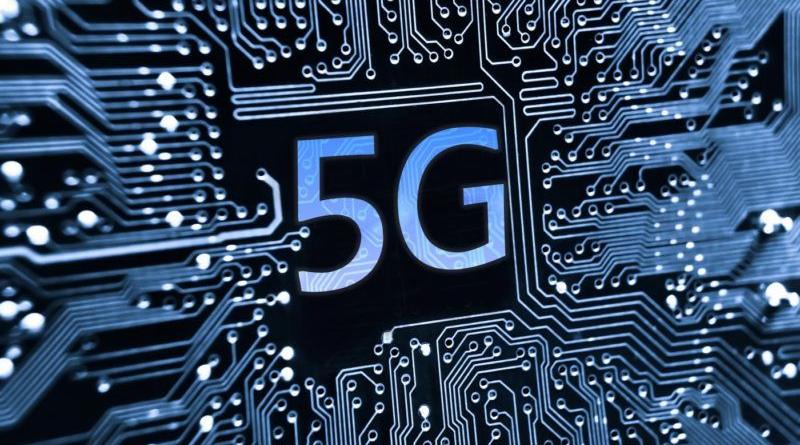Ericsson: 5G could ‘dramatically increase’ network energy consumption.

It is the industry’s responsibility to roll-out the fifth generation (5G) of wireless communication networks without increasing energy consumption, Swedish telecoms giant Ericsson writes in a report outlining how this can be done.
“Energy consumption is set to increase dramatically if 5G is deployed in the same way as 3G and 4G were,” Ericsson warns in a report published in March.
“Some communications service providers have even estimated a doubling of their energy consumption to meet increasing traffic demands while improving their network and rolling out 5G,” writes Erik Ekudden, Senior VP, CTO and Head of Group Function Technology at Ericsson, in a foreword to the report.
“This is not sustainable from a cost or environmental perspective,” he warns.
At the same time, 5G is “the most energy-aware standard,” he continues, citing technological improvements such as smarter sleep modes and more efficient data transmission, which could help reduce the energy consumption of connected devices.
These features, combined with a new approach to network roll-out, make it possible to “quadruple data traffic without increasing energy consumption,” he believes.
“In fact, we believe it is our responsibility, together with all other ICT industry players,” Ekudden concludes.
Historically, the roll-out of telecom networks has always come with a growing energy consumption, explains Mats Pellbäck Scharp, head of sustainability at Ericsson, in a podcast on the report.
“Every time we have launched a new standard — I mean 2G, 3G, 4G — the energy consumption has increased quite significantly,” he said.
“This cannot happen when we launch 5G. We need to break the energy curve.”
The European Commission has sought to accelerate the roll-out of fifth generation wireless communication networks, known as 5G.
Last month (30 June), the EU executive adopted the “Implementing regulation for small cells,” allowing 5G antennas to be installed without individual permits — as long as they adhere to strict EU exposure limits as well as any national or local requirements.
“This means 5G antennas can be installed more quickly, as normally permits can take several months to be issued,” an EU Commission spokesperson told EURACTIV.
The accelerated roll-out of 5G networks is viewed as a “major enabler” to reach broader EU objectives, including those related to energy and climate change.
“5G will transform our economy and society. It will make new services possible in healthcare, energy, transport and education,” the spokesperson explained.
After all, 5G networks will achieve much better coverage and higher connection speeds, which will facilitate technologies such as the internet of things and artificial intelligence by which objects communicate with each other, or “think” for themselves. And that can be used to optimise the energy use of a system, the EU executive argues.
“Digital technologies could help reduce overall emissions by up to seven times more than the emissions they themselves produce – and help to reduce global emissions by up to 15%,” the spokesperson underlined.
“But the ICT sector also faces its own green challenge,” he added, saying “estimations show that it currently accounts for between 5 and 9% of global electricity consumption and more than 2% of global greenhouse gas emissions.”
The Commission will therefore work on improving durability, maintenance, repairability and recycling of electronic devices, through “energy and material efficiency measures,” the spokesperson said.
Regarding the energy implications of 5G networks however, the EU executive provided a rather optimistic figure.
“When using 5G the power consumption per bit is 90% less than on 4G,” the Commission spokesperson told EURACTIV, adding: “This really constitutes an important improvement”.
A smarter network roll-out?
But, that is not the right way to approach the matter, says Ericsson’s Pellbäck Scharp.
“Energy consumption on network level is not proportional or directly linked to how much data is going through the network,” he told EURACTIV in emailed comments.
“Energy consumption grew when we built out the 4G networks around a decade ago — not when the data traffic grew,” he explained. “That happened later”.
Moreover, increased volumes of data are of limited importance today with regard to the energy consumption of the network, Pellbäck Scharp explained.
More important, he says, is where the data is used as well as the daily variations in traffic. “This has a lot of impact on dimensioning of sites and equipment as well as how much energy different sleep modes will save,” he points out.
For an energy efficient 5G, Ericsson’s report therefore argues in favour of changing the way networks are built.
“Previous deployments of mobile generations were often managed by adding new equipment while keeping existing network assets,” the report states. “This practice must change.”
Ericsson’s “new approach” to the roll-out of wireless communication technologies can be summarised in 4 steps:
- “Prepare the network”: which includes replacing existing network assets instead of simply adding new ones
- “Activate energy-saving software”: which refers to energy saving features in the 5G network components, such as “micro-sleep” functions.
- “Build 5G with precision”: which is about avoiding over-dimensioning hardware by considering the needs for a specific area, to save on energy and costs.
- “Operate site infrastructure intelligently,” including the use of artificial intelligence to operate site infrastructure.
“If this model is followed, the costs for energy could go down,” Pellbäck Scharp told EURACTIV. “On the other hand, if 5G is built in the same way that traditional technology has been built, the energy cost will go up significantly,” he warned.
“By preparing the network there will be massive savings on existing network footprint to make room for 5G,” he explained. “And then you build it smart and utilise software to save as much as possible.”
Research ongoing
Scientists, for their part, are not ready yet to make quantitative assessments about the energy consumption of 5G networks.
“It is difficult to make definitive statements,” says Alessio Zappone, assistant professor in signal transmission at University of Cassino and Southern Lazio.
“However, I think it can be stated that 5G will not meet the goal of reducing the energy consumption compared to 4G,” he told EURACTIV in emailed comments.
“One reason for this is the much larger volume of data that 5G must handle,” he explains. “This has led to new transmission techniques which are able to provide much higher communication rates, but whose energy efficiency is doubtful.”
Uncertainty also stems from the different design of electronic hardware, such as more numerous, but smaller sized antennas.
“The trade-off between these two factors is not clear at present,” Zappone stated, emphasising that research is still ongoing on the issue.
Bart Smolders, professor in electromagnetics and antennas at Eindhoven University of Technology, agrees that there is “no simple answer” to the energy efficiency of 5G when measured per bit of information.
“The global data usage of the mobile network grows annually, by an approximate factor 10 every 5 years, or around 5 exabyte per month in 2021,” he told EURACTIV in emailed comments. “Because every bit you emit costs energy,” he explained, “the energy consumption grows as well”.
If the volume of data traffic increases with 5G, it seems intuitive that energy consumption of the network will increase as well.
But that relation is not so clear-cut, explains Smolders, because the new network will indeed be of an entirely different generation.
Future antennas will for instance be “smart” and no longer emit energy all around them, but direct it towards their intended receiver.
According to Smolders, the energy performance of 5G will also depend on the stage of roll-out, which he says can be divided into three phases:
- From 2020, 5G will be introduced at lower frequencies (700 MHz, 1400 and 2100 MHz) and have “comparable performance to 4G in terms of data speed and energy use.”
- From 2023, 5G will be introduced at 3.5 GHz. That will mean higher data speed, but “by now already some more antenna stations will be necessary (around 10% more or so)”
- From 2025, 5G will be introduced at 26 GHz. That will mean “a lot higher data speed (factor 100)” and “by now crowded regions will require a lot more antennas, but those will be smart.”
Euractiv



